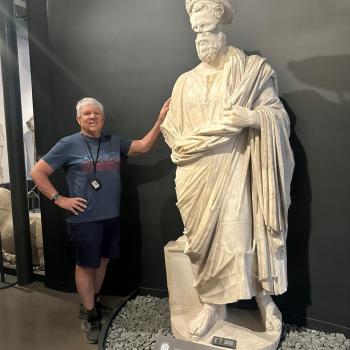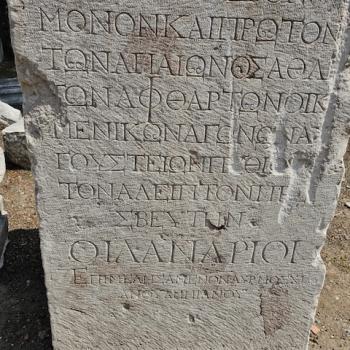You will remember that I mentioned in a previous post in this series that we need to have a clear grasp on the concept of progressive revelation. By this I mean that God revealed to his people his truth gradually over time, and that as the author of Hebrews says the revelation before Christ was incomplete, it was partial and piecemeal. Also, God’s revelation was appropriate to the audience that he revealed it to. It was not something way beyond their power to grasp, but rather was a word on target, though it foreshadowed many things to come. Basically, the Old Testament is about God the Father, the Gospels are about God the Son, and the rest of the NT has much to say about the Holy Spirit. So if you were to ask me, can we find the concept of a 3 person God in the Bible, the answer is yes we can. It is not however until the Christ event and after that, that God’s inspired writers began to piece together the revolutionary notion of one God expressed in three personal forms, blessed Trinity. What prompted all of this reflection is that the earliest Christians like Paul began to realize that Jesus was the divine Son of God, indeed God the Son. They began to realize that he had equality with God before the foundations of the world, and that he limited himself in the incarnation, becoming genuinely human. The Christ event itself caused a Copernican sized revolution in how early Christians read the OT. What is crucial to note is that they did not try to find Christ under every rock in the OT. They did not, for example, immediately jump to the conclusion that when Genesis says ‘let us make God in our image’ that it was talking about the Trinity. Like the Jewish interpreters before Christ, that was understood to refer to Yahweh and his heavenly angelic council, just like one finds for instances in Job 1-2 and elsewhere. It was the Christ event including the exaltation of Christ to the right hand of the Father and the giving him the name of God (the name above all names is not Jesus, the name the Son had in his humanity. The name above all names is Lord, and in this case risen Lord) that kicked Trinitarian thinking into high gear. There was also Jesus’ identification of himself with the Son of Man figure in Dan. 7.13-14 who is both human and also more than human that further accelerated this whole process. What about the Holy Spirit. Herein lies a problem. In the OT there are only a couple of references to a ‘Holy Spirit’. Elsewhere it is pretty clear the reference is to God’s spirit, which is to say the living presence of the Father, not an independent member of the Holy Trinity. It is not until the NT period that the Spirit is spoken of in such a personal way, and this is because Christ himself in John 14-17 indicates he is talking about a person, an advocate, and agent, that he will send when he returns to heaven. Someone not less personal that Christ himself, who can be grieved, who can guide, who can sanctify and so on.
The bottom line is that we see the process of beginning to do genuine Trinitarian thinking in the NT, and frankly not before then, but then God’s people were not ready for such a revelation before the God-man showed up on earth. I discuss all of this at length in my Biblical Theology volume, but if you want a brief introduction to this see the book I did with Laura Ice entitled The Shadow of the Almighty, which will walk you through how to view these things, without turning the OT into a Christian allegory. It is important to note that the author of Hebrews, as well as Paul and Peter understood there was a before and after in God’s revelation with Christ being the fullest revelation of God’s nature and character. So for instance we have types of the coming Christ in the OT, like Melchizedek, but the overwhelming message of Hebrews is Jesus is like OT figures but great— greater than Abraham, Moses, Melchizedek, the prophets, indeed even greater than the angels. So OT figures are not incarnations of the Son before his time, they are types, foreshadowings of the coming one. The only exception to this rule is that Christ is identified in some of the Christological hymn fragments like in Col. 1 or John 1 as that Wisdom/Word figure referred to in Prov. 3, 8-9, and elsewhere, the very wisdom of God who in due course came in the flesh.
Think on these things.













